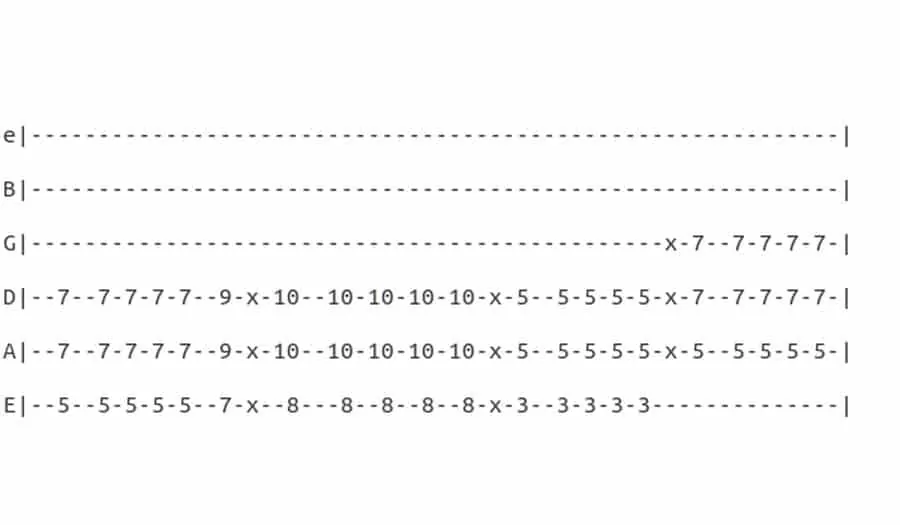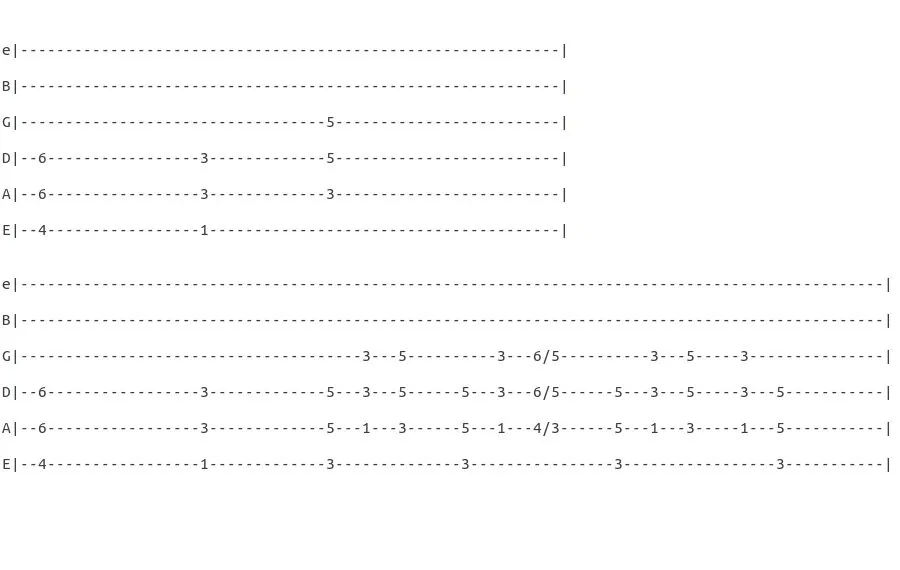Getting into guitar playing can seem pretty daunting, but it definitely doesn’t need to be.
Although learning the basics of technique and theory is important, your first steps as a budding guitarist need not be steeped in the drudgery of repetitive practices and dreaded etudes. There are all sorts of songs you can begin learning just as soon as you pick up your 6-string.
The best way to sustain your interest in learning to play any instrument is to make learning as enjoyable as possible. By learning songs you know and love, you can do just that. Over time, the basics will become second nature and you’ll find yourself armed with an arsenal of songs to share with friends, family and your first batch of band mates.
Here, we’ve assembled four stellar tunes for beginners to learn. We’ve left out solos for the most part, to keep things simple, and focused on the main riffs/choruses. Read on to rock on.
Contents
A Crash Course on Guitar Tablature or ‘Tabs’
Since the songs in this article will be explained in part through the use of tabs, we’ll quickly cover the basics of reading them so you can start playing as soon as possible.
- Guitar tabs are a visual representation of the strings of a guitar. Usually, tabs show strings from highest at the top to lowest at the bottom. Notes are arranged in the order they are to be played and spaced accurately to approximate timing.
Although tabs vary in degrees of complexity, the tabs we’ll be using are relatively simple, without very many special symbols.
- Special symbols in tabs tell you when to use a specific technique as you play. Whenever a tab uses symbols, it is customary to include a quick key for reference where meanings are written out.
Here, you’ll only find the following symbols: ‘x’, ‘p’ and ‘\’. These represent dead notes (notes played with a finger resting on the string for percussive effect), pull-offs and downward slides respectively.
Now that you know enough to get rolling, without further ado, here are four easy songs for you to learn on guitar:
Lenny Kravitz – Fly Away
“Fly Away” came out in 1998 as the 4th single on Lenny Kravitz’s 5th studio album. It peaked at the 12th position on Billboard’s Hot 100 chart as well as topped both the Mainstream Rock and Modern Rock Tracks charts as one of the singer’s most salient songs to date.
Needless to say, this song is pretty easy to recognize and, surprisingly, even easier to play. In fact, all but a single sliding note can be played with just one power chord shape.
As the first song on our list, this one is also the easiest to learn.
To start, you’ll need to form an A power chord. Your index finger should press down at the 5th fret of the E string, your ring finger should press at the 7th fret of the A string and your pinky should press at the 7th fret of the D string.
Now move this shape up the neck until your fingers are at 7th on E, 9th on A and 9th on D. Congratulations! That’s a B power chord. Move one half-step (one fret) up again to find the C power chord. Make the shape yet again starting with your index at 3rd on E to find the G power chord. Finally, use the same shape with your index finger at the 5th fret on the A string, ring finger on the 7th fret of the D string and pinky on the 7th fret of the G string for the D power chord.
That’s it! Those are all of the chords in the song. Learning to play it is as simple as putting them in order. Here’s the tab:
Fly Away – Main Riff
Deep Purple – Smoke on the Water
“Smoke on the Water” is a particularly iconic rock song worth learning. It is also one of the easiest songs to learn.
Featured on Rolling Stone’s list of the 500 greatest songs of all time, this song tells a true story regarding the Montreux casino in Switzerland going up in flames. As far as its singular riff goes, you’ll find it fairly simple to pick up and a lot of fun to play. The solo is a bit more difficult to get the hang of, so we’ll leave that out for now.
Begin with a G power chord by pressing your index finger on the 3rd fret of the E string. Your ring and pinky fingers should press on the 5th fret of the A and D strings, respectively. This is actually the same shape you’ll use for the rest of the song. The remaining chords are A#, C, C# and G#. Holding the same shape with your fingers, you can find each of these easily.
A# is found by placing your index finger at the first fret of the A string. Move one step (two frets) up the neck to find C, then half a step up to find C#. Return your index to the E string and press down at the 4th fret to find G#. There you have it, all the chords you need to play this song.
The tab below shows where everything goes in more detail so you can get your timing right. You’ll notice the ‘\’ symbol we mentioned earlier for performing a slide back down to a lower chord position.
Smoke On the Water – Main Riff
Smoke On the Water – Verse
Smoke On the Water – Chorus
Bush – Glycerine
This song proved to be one of the band Bush’s most popular singles and topped Billboard’s Modern Rock Tracks chart back in 1995 for 2 weeks straight. The song itself was penned by the band’s lead singer Gavin Rossdale for his girlfriend at the time and features a string ensemble in its studio recordings.
“Glycerine” is a great, mellow tune worth trying out. As is the case with the other songs in this list, all you need to do to play this song is move the same chord shape around the fretboard.
You’ll start with an F power chord with your index finger on the E string. Next, move your index finger to the 3rd fret of the A string to play a G power chord. Jump up the neck to the 5th fret of the A string with your index finger to play a D power chord and then move back down to the 1st fret of the A string to hit an A# power chord.
The trickiest part of learning to play this song is nailing the choral riff’s dead notes; however, the chords are still just F, G and A#. Here’s the tab:
Glycerine – Main Riff
Smashing Pumpkins – Today
“Today” served as the song that made Smashing Pumpkins popular back in 1993. Despite the upbeat sound and feel, the song actually reflects on the band’s troubles at the time and lead singer Billy Corgan’s personal problems with mental health. It remains a classic of the genre to date, though. In fact, this particular Smashing Pumpkins jam proves simplicity can sound pretty awesome all around.
Today has a little lick at the beginning that can be a tad tricky for absolute beginners and is technically played on two guitars, but it is still easy enough for us to include it here. We’ll focus on the lead guitar’s portion of the song.
The intro (and outro) start on the 11th fret of the e string. Place your index finger across both the e string and the B string. The p in the tab below shows where you’ll need to pull-off from the 15th fret of the e string back to the 11th fret.
Today – Intro / Outro
Today – Main Riff
Today – Interlude
Today – Chorus
For the actual verse, chorus and interlude riffs, you’ll be using power chords again with the same shape as before. Begin at the 6th fret with your index finger on the A string to play a D# power chord, then move the shape over to place your index finger on the E string at the same fret for an A# power chord. Move down a step to reach G#.
The next bar repeats the first two chords of the first bar, but instead of moving down from A#, you’ll move up to the 8th fret of the E string to play a C power chord, then move down to G#.
For the chorus, you’ll play an F power chord with your index finger at the 1st fret of the E string. Next, play G# again, then a C# power chord with your index finger on the 3rd fret of the A string. To end the chorus, play F and G#, then play G by moving the shape a fret lower. Finally, play D by starting the shape with your index finger on the 5th fret of the A string.
The interlude uses the same chords you’ve learned in the verse. Here’s the tab:
There you have it – four great songs that any beginner can quickly pick up on guitar. Give them a try and you’ll see just how much fun they are to play.









